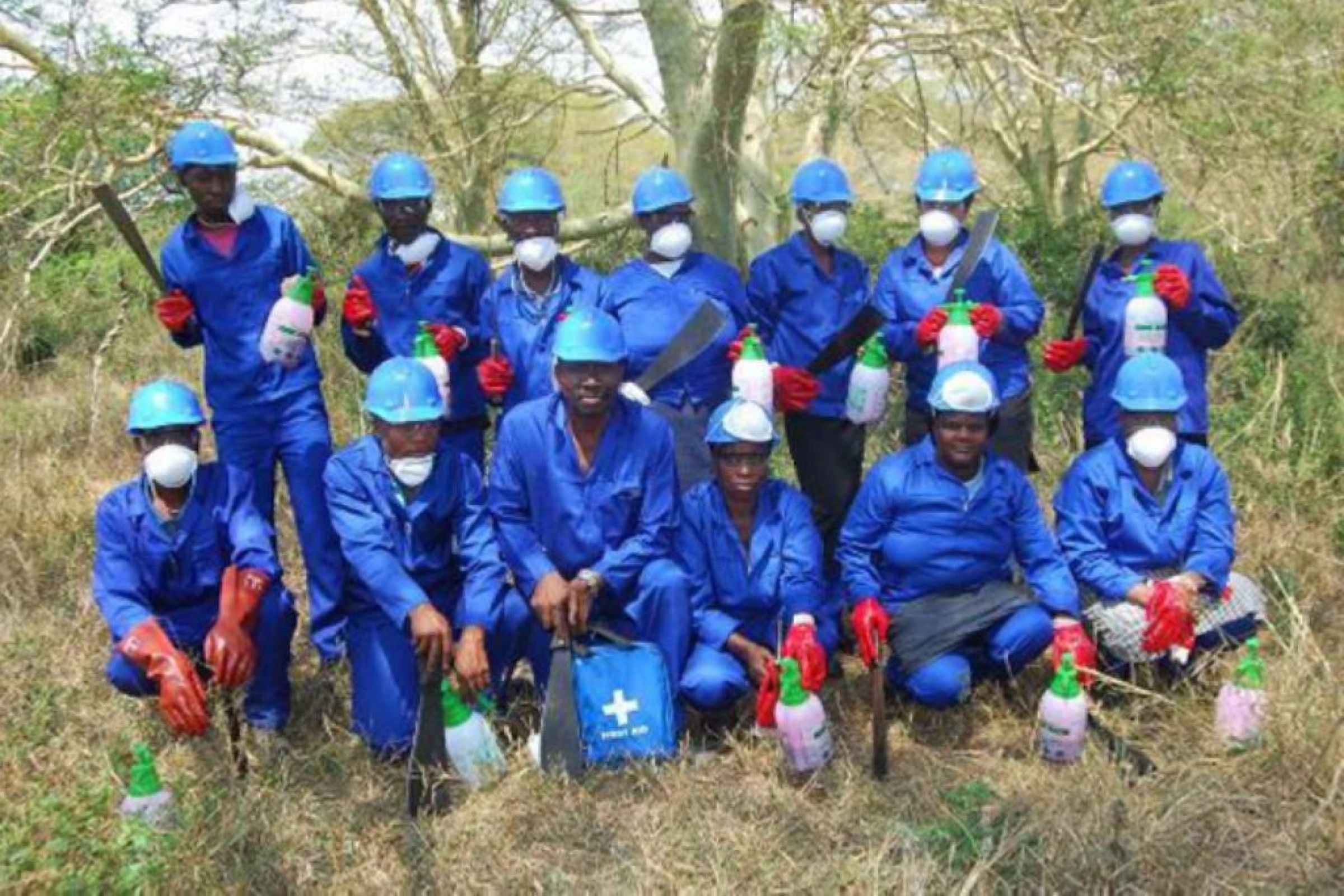
iSimangaliso fights aliens
30 October 2019

Yes, there are aliens among us, and yes, they are a bigger threat than we may realise. They may not be little bald creatures with googly eyes – many prefer a leafy disguise and even adorn themselves with pretty flowers to lure innocent gardeners into cultivating them. They have entered our shores surreptitiously over the decades, insidiously claiming large tracts of the earth as their own as they oust the rightful tenants of the land. But not without a fight!
The iSimangaliso Wetland Park, like most protected areas in South Africa, has a veritable army of land care workers doing their best to protect us from the invasion, and they do an excellent job. Since its inscription as a World Heritage Site in 1999, iSimangaliso has steadily grown and strengthened its defences against public enemy number one: alien plants.
A two-pronged approach
“iSimangaliso’s model is based on two key principles,” says Land Care Manager Carl Myhill, “conservation benefit and job creation. It is the Park’s largest area of employment, accounting for over 1100 people working in the field each year. Together, we tackle and control invasive plants in around 50 000 hectares per annum.” Carl explains that following up on previously cleared areas is a priority as the job is never done as sneaky seedlings always persist. Blocks of land are mapped out giving priority to the most significant threats to biodiversity. Capacity to control these aliens is limited by available funding provided each year through the Department of Environment, Forestry and Fisheries’ sub programmes – Natural Resource Management Programmes.
Why should we care?
Alien plants are a serious and significant threat to our water security and biodiversity, animal and human health, and crops. Some aliens extract up to ten times the amount of water that indigenous plants do, and out-compete palatable plants that provide nutrition and grazing for our animals. Over the past 15 years, iSimangaliso has systematically removed plantations of aliens such as eucalyptus and pines, enabling the water table and wetlands to return. Annually, the organisation’s Land Care department implements a structured management block-clearing regime to tackle some of the most prominent and serious ‘nasties’, including Parthenium hysterophorus (famine weed), Chromolaena odorata (triffid weed), Pereskia aculeate (Barbados gooseberry), Lantana camara (lantana), Cereus jamacaru (Queen of the night), Psidium guajava (guava) and Solanum maritianum (bugweed) just to name a few.
Famine weed – considered the most severe of all alien plant threats when it started to march along roadsides countrywide earlier this decade – is now being brought down to manageable levels in and around iSimangaliso thanks to an intensive eradication campaign. Control is necessary not only inside the fenced areas but along roadways and river courses leading to the Park as well.
While the bulk of terrestrial area within iSimangaliso lies to the south of Sodwana Bay, the Park has recently expanded its area of alien plant eradication to the northern parts, extending through the Coastal Forest section to Kosi Bay on the Mozambican border. iSimangaliso is systematically rolling out its land care programme to bring about balance throughout the Park, in terms of both biodiversity and resultant economic benefits.
Emerging threats – and they aren’t all plants Each year, new threats are identified by researchers. A recent workshop hosted by SANBI, SASRI and INR listed several of those starting to make themselves felt. These include the Ant Tree, Pompom weed, Cat’s Claw creeper, Elephants foot, Lollipop climber and Yellow Himalayan raspberry.
And alien threats to our vegetation and biodiversity are not just limited to plants, but also bugs that target them. One of the scariest, first noticed in our country just two years ago and now steadily gaining hold, is the Euwallacea sp. (Polyphagus shothole borer), found in over 75 species of tree in South Africa including several important agricultural producers such as the avocado, orange, lemon and pecan nut trees.
How you can help
Become educated and aware. Internet sites such as www.environment.co.za, www.sanbi.org or www.invasives.org.za have plenty of information. Learn what aliens look like and take measures to remove these from your gardens or plots. If you notice any of the serious invaders, contact the ARC Plant Protection Research Institute (
Footnote
The iSimangaliso Authority produces 20 news flashes a year on issues of interest or importance to stakeholders and visitors. These can be received by email, or found on the website, together with other relevant Park information.
Media enquiries should be directed to Debbie Cooper at